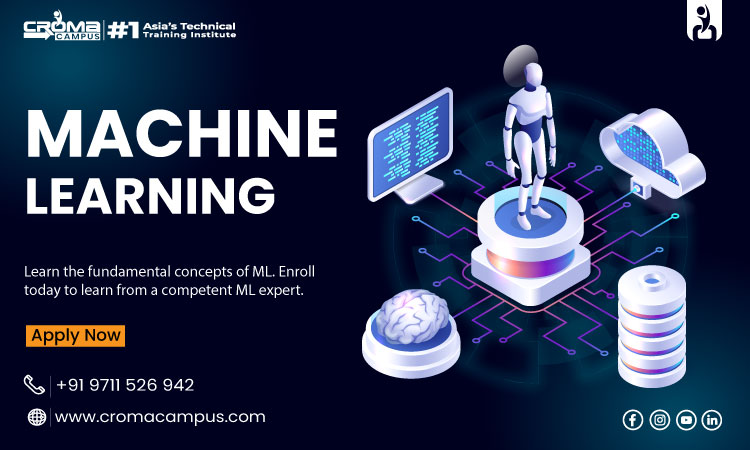
Embarking on the journey to learn Machine Learning Using Python opens the doors to a world of endless possibilities. Python’s simplicity and versatility, coupled with the vast array of Machine Learning libraries, make it the ideal choice for both beginners and seasoned professionals. Whether you’re intrigued by predictive modelling, pattern recognition, or data-driven decision-making, mastering Machine Learning with Python equips you with powerful tools to tackle real-world challenges.
This guide outlines a structured approach to learning, combining theoretical understanding with hands-on practice, paving the way for a fulfilling exploration of the fascinating field of Machine Learning.
Learning Machine Learning Using Python
Learning Machine Learning using Python can be an enriching journey, blending theory with practical implementation. Python has become the de facto language for Machine Learning due to its simplicity, extensive libraries, and vibrant community.
Here’s a structured approach to kick-start your learning.
1. Understanding the Basics of Python
Before diving into Machine Learning, ensure you have a good grasp of Python fundamentals. Concepts like data types, loops, functions, and libraries will be crucial throughout your Machine Learning journey.
2. Foundational Mathematics
A solid understanding of mathematics forms the backbone of Machine Learning.
Focus on:
- Linear Algebra: Vectors, matrices, operations, and transformations.
- Calculus: Derivatives and gradients are fundamental for optimization algorithms.
- Probability and Statistics: Distributions, mean, variance, hypothesis testing, etc.
3. Introductory Machine Learning Concepts
Familiarize yourself with core Machine Learning concepts such as:
- Supervised Learning (classification, regression)
- Unsupervised Learning (clustering, dimensionality reduction)
- Evaluation Metrics: Accuracy, precision, recall, F1-score, etc.
- Overfitting, underfitting, bias-variance tradeoff.
4. Python Libraries for Machine Learning
Learn popular libraries such as:
- NumPy: For numerical computations and handling arrays.
- Pandas: For data manipulation and analysis.
- Matplotlib and Seaborn: For data visualization.
- Scikit-learn: A comprehensive Machine Learning library with tools for classification, regression, clustering, etc.
5. Hands-on Projects
Apply what you learn through projects. Start with simple ones and gradually increase complexity.
Projects could include:
- Predicting house prices based on features.
- Classifying hand-written digits using neural networks.
- Sentiment analysis on movie reviews.
- Customer segmentation for marketing strategies.
6. Deep Learning
Once you’re comfortable with traditional Machine Learning, delve into deep learning.
Key topics include:
- Neural Networks: Understanding layers, activation functions, and architectures.
- Convolutional Neural Networks (CNNs) for image processing.
- Recurrent Neural Networks (RNNs) for sequential data.
- Frameworks like TensorFlow and PyTorch for deep learning implementations.
7. Online Courses and Tutorials
Utilize online courses and tutorials to structure your learning. This shall help you gain significant knowledge on ML and Python through online, instructor-led training sessions. Various online and offline resources offer comprehensive courses on Machine Learning with Python.
8. Books and Documentation
Refer to books like “Hands-On Machine Learning with Scikit-Learn, Keras, and TensorFlow” by Aurélien Géron and “Python Machine Learning” by Sebastian Raschka. Also, explore documentation and tutorials provided by libraries like Scikit-learn and TensorFlow.
9. Kaggle and Open Source Contributions
Participate in Kaggle competitions to apply your skills to real-world datasets and learn from the community’s solutions. Additionally, contribute to open-source projects related to Machine Learning to gain practical experience and collaborate with others.
10. Stay Updated and Experiment
Machine Learning is a rapidly evolving field. Stay updated with the latest research papers, blogs, and conferences. Experiment with new techniques, algorithms, and datasets to deepen your understanding and skills.
Applications Across Industries:
1. Healthcare:
Machine learning is revolutionizing healthcare by enhancing diagnostics, predicting disease outbreaks, and personalizing treatment plans. Algorithms can analyze medical records, imaging data, and genomic information to provide insights that support medical professionals in making more informed decisions.
2. Finance:
In the financial sector, machine learning is utilized for fraud detection, risk assessment, algorithmic trading, and customer service. Predictive models help financial institutions optimize portfolios and identify potential market trends, enabling more effective decision-making.
3. Retail and E-commerce:
ML algorithms power recommendation systems, personalized marketing strategies, and demand forecasting in the retail sector. This facilitates a more seamless and personalized shopping experience for consumers while optimizing inventory management for businesses.
4. Manufacturing and Industry:
Machine learning is employed in predictive maintenance, quality control, and process optimization within manufacturing. By analyzing sensor data and historical records, ML models can identify patterns that indicate potential equipment failures, reducing downtime and improving overall efficiency.
5. Transportation:
Autonomous vehicles, route optimization, and predictive maintenance are areas in transportation benefitting from machine learning. ML algorithms process vast amounts of data from sensors, cameras, and GPS to make real-time decisions, enhancing safety and efficiency in the transportation industry.
6. Education:
In education, machine learning aids in adaptive learning platforms, student performance prediction, and personalized tutoring. These applications cater to individual learning styles and help educators tailor educational experiences to meet the diverse needs of students.
Challenges and Limitations:
While the scope of machine learning is broad, it is not without challenges and limitations. Some key concerns include:
1. Data Quality and Bias:
The quality of ML models heavily depends on the quality of the data used for training. Biases present in training data can lead to biased predictions, reinforcing existing inequalities and discrimination.
2. Interpretability:
Many machine learning models, especially complex ones like deep neural networks, are often considered “black boxes” because understanding their decision-making processes can be challenging. This lack of interpretability raises concerns, especially in critical applications like healthcare and finance.
3. Ethical Considerations:
Machine learning systems can inadvertently perpetuate or even exacerbate societal biases present in the data. Ensuring fairness, transparency, and accountability in ML algorithms is a critical ethical consideration.
4. Security:
Security is a concern in machine learning systems, particularly when they are vulnerable to adversarial attacks. Ensuring the robustness of models against intentional manipulation is an ongoing challenge.
Future Prospects:
The scope of machine learning is poised for continuous expansion as researchers and practitioners address existing challenges and explore new frontiers. Several trends indicate the future directions of machine learning:
Conclusion
Learning Machine Learning using Python is a rewarding journey that requires dedication, practice, and continuous learning. You can join the Machine Learning Course to start with the basics. Then, gradually build your knowledge, and don’t hesitate to explore advanced topics. With perseverance and hands-on experience, you shall develop the expertise to tackle real-world problems using Machine Learning.



